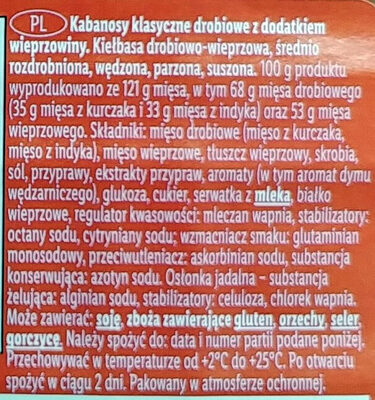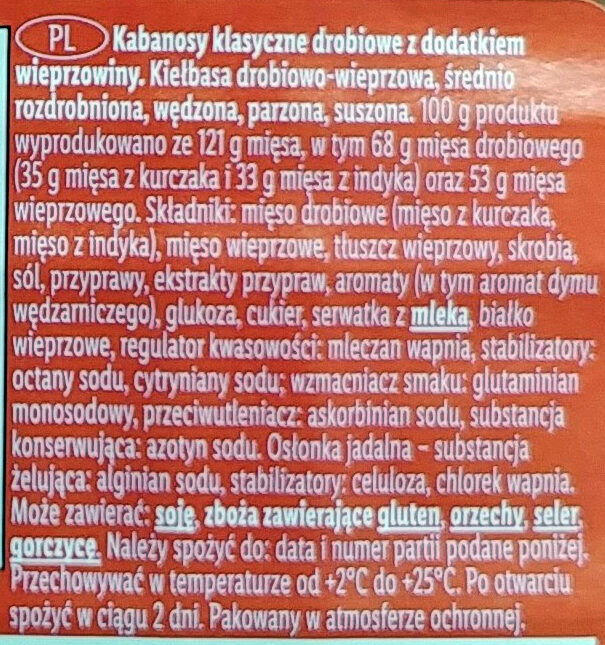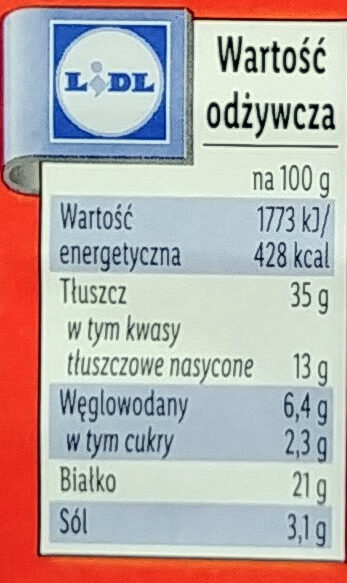Kabanosy klasyczne drobiowe z dodatkiem wieprzowiny - Pikok - 400 g
Ambiguous barcode: This product has a Restricted Circulation Number barcode for products within a company. This means that different producers and stores can use the same barcode for different products.
×
This product page is not complete. You can help to complete it by editing it and adding more data from the photos we have, or by taking more photos using the app for Android or iPhone/iPad. Thank you!
×
Barcode: 20149307
Quantity: 400 g
Brands: Pikok, Tarczyński
Categories: Meats and their products, Polish meat products, pl:Kabanosy
Labels, certifications, awards: No colorings, pl:Bez dodatku fosforanów
Manufacturing or processing places: PL 55-100, Trzebnica, Polska
Traceability code: PL 02200303 WE
Stores: Lidl
Countries where sold: Poland
Matching with your preferences
Environment
Packaging
Transportation
Report a problem
Data sources
Product added on by pyrka
Last edit of product page on by sierigh.
Product page also edited by openfoodfacts-contributors, roboto-app.
If the data is incomplete or incorrect, you can complete or correct it by editing this page.










